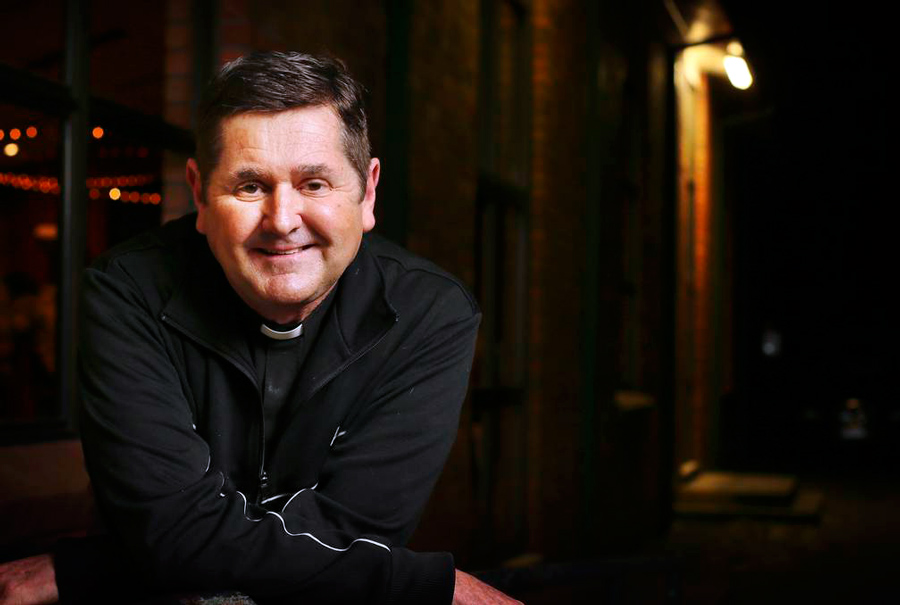
As priests begin new parish assignments in the month of July, here is a look back to 10 of the world’s most amazing priests in 2012.
Fr. Andrew Apostoli
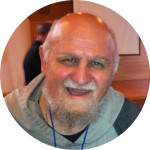 Fr Andrew Apostoli was a leader in the founding of the Franciscan Friars of the Renewal, a strict order that lives the austere Franciscan life to the letter. They seek to live among the poorest of people and have a policy that if a local community improves and becomes wealthier, then they must leave and move to a more deprived area. They have a house in the suburbs of Limerick city in Ireland and in the South Bronx of New York.
Fr Andrew Apostoli was a leader in the founding of the Franciscan Friars of the Renewal, a strict order that lives the austere Franciscan life to the letter. They seek to live among the poorest of people and have a policy that if a local community improves and becomes wealthier, then they must leave and move to a more deprived area. They have a house in the suburbs of Limerick city in Ireland and in the South Bronx of New York.
In 1988, Fr Andrew influenced the founding of the Franciscan Sisters of the Renewal.
A regular host on EWTN, Fr Andrew is a world expert on the apparitions of Our Lady at Fatima. Ignatius Press published his book Fatima for Today, which offered rebuttals to Fatima campaigners who argue that the Third Secret has not been fully revealed. Fr Andrew uses the story of Fatima to illuminate many complex subjects, and believes that, if properly understood, the fact that Our Lady appeared at Fatima should lead to better relations between Christians and Muslims. Fr Andrew quotes Archbishop Fulton Sheen’s point that Our Lady’s appearance at Fatima, a place named after Mohammed’s favourite daughter, is a sign of Our Lady’s love for the Muslim people. Incidentally, Fr Andrew is the vice-postulator of the Cause for the canonisation of Archbishop Sheen.
Fr Andrew has written many books, one of which bears the astounding title What to Do When Jesus is Hungry.
2. Fr. Hugh Thwaites
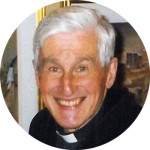 One of England’s best-loved priests will celebrate his 95th birthday on July 21. Known for his bright smile and infectious missionary spirit, Fr Hugh Thwaites is a symbol of what one priest’s unflagging commitment to evangelisation can achieve.
One of England’s best-loved priests will celebrate his 95th birthday on July 21. Known for his bright smile and infectious missionary spirit, Fr Hugh Thwaites is a symbol of what one priest’s unflagging commitment to evangelisation can achieve.
Fr Hugh knows what it is to convert to Catholicism. He converted from Anglicanism when he was a passenger aboard a troop ship bound for Singapore during World War II. He spent three punishing years as a Japanese prisoner of war, which gave him insight into human nature. “To see men in such extreme conditions is to see the very roots of their character,” he has said. In order to survive in the prison camp Fr Hugh sold his watch. After the war he was ordained a Jesuit.
The zeal of the convert has never left Fr Hugh and he first asks new people he meets: “Are you a Catholic?” If they reply “no” then he asks: “But you would like to be, wouldn’t you?” Fr Hugh is a champion of the Legion of Mary, an ardent supporter of the Extraordinary Form and renowned for his tenacity in spreading devotion to the rosary. In his startling booklet, Our Glorious Faith and How to Lose It, Fr Hugh links the abandonment of the rosary with losing the faith. He explains that Our Lady has asked us to say the rosary. “If we want in any way to be like Jesus,” he says, “we must do what His Mother asks. If we do not, can we expect things to go right? We cannot with impunity disobey the Mother of God.”
Fr Hugh may be advanced in years and describes himself as “living on the edge of eternity”. But his many talks are available online and blogs are buzzing with lively discussions about how he brought new people into the Church.
Fr. Hugh died on August 21, 2012.
3. Fr. Anthony Pinizzotto
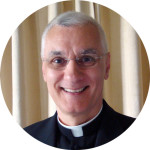 Fr Anthony Pinizzotto was a forensic psychologist by day and priest by night. He led a dynamic existence as a priest who simultaneously worked for the FBI’s Behavioural Science Unit, while also serving in a suburban parish in Virginia.
Fr Anthony Pinizzotto was a forensic psychologist by day and priest by night. He led a dynamic existence as a priest who simultaneously worked for the FBI’s Behavioural Science Unit, while also serving in a suburban parish in Virginia.
Fr Anthony has a total of five university degrees and earned a PhD in psychology from Georgetown University. In the 1970s, he spent three years working as a policeman in Washington before being ordained a priest in 1978. The FBI discovered him and in 1988 he went to work for them with the assignment of investigating the killings of on-duty police officers.
He has written two spine-chillingly accurate studies: Killed in the Line of Duty and Violent Encounters. A chief area of his expertise concerns why some policemen are far more likely than others to be gunned down by criminals. One of his findings was that policemen who are helpful may be shot on duty because they “let their guard down” when searching a vehicle or arresting someone.
In 2008, after more than 20 years in the FBI, Fr Pinizzotto retired. But his vast knowledge of the criminal mind is not going to waste. He has since become a consultant to the FORCE Science Research Centre and he travels the world to deliver lectures. He has also been appointed science director at the Istituto Formazione D’Eccellenza in Montova, Italy.
4. Fr. Josef Bisig
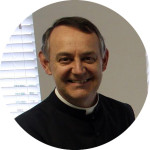 Fr Josef Bisig is originally from Switzerland and in 1988 he led the founding of the Fraternity of St Peter (FSSP) after private consultations with the then Cardinal Ratzinger. Fr Bisig made sure that the FSSP, while not a religious order but a priestly association, would prioritise forming priests and training them effectively for parish work.
Fr Josef Bisig is originally from Switzerland and in 1988 he led the founding of the Fraternity of St Peter (FSSP) after private consultations with the then Cardinal Ratzinger. Fr Bisig made sure that the FSSP, while not a religious order but a priestly association, would prioritise forming priests and training them effectively for parish work.
The FSSP saw success very quickly: within 10 years it had seminaries in both Europe and America. In recent years they started a House of Formation in Australia. Fr Bisig has become a global leader in advocating the Tridentine Latin Mass. He had the honour of celebrating the first Extraordinary Form Mass on EWTN on September 14 2007, which was day the July 7 2007 Motu Proprio Summorum Pontificum went into effect. Fr Bisig continues to meet the Holy Father and they reportedly enjoy spirited discussions in their mother tongue.
Known for his humility, Fr Bisig prefers to credit others for the FSSP’s success. After completing his term as founding superior of the FSSP, Fr Bisig became the rector of Our Lady of Guadalupe Seminary in Lincoln, Nebraska (pictured above). Our Lady of Guadalupe Seminary has reason to be one of the most selective seminaries in the world, because it can only accept a small percentage of applicants due to limited space. Among their seminarians is Ian Verrier from Birmingham.
5. Fr. George Grafsky
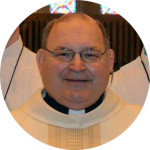 Fr George Grafsky is the parish priest of St Anne in Le Sueur, a suburb of Minneapolis, Minnesota. It is a bitterly cold, frosty spot. Fr George has a cheerful expression and a relaxed, child-like face, which is not what one expects from a priest who meets many challenges in the most frenzied and panicked of situations.
Fr George Grafsky is the parish priest of St Anne in Le Sueur, a suburb of Minneapolis, Minnesota. It is a bitterly cold, frosty spot. Fr George has a cheerful expression and a relaxed, child-like face, which is not what one expects from a priest who meets many challenges in the most frenzied and panicked of situations.
As well as being chaplain to the Le Sueur County Sheriff’s Department, he also works side-by-side with the police and is often one of the first people they call when they have harrowing tasks to perform. Fr George is unflappable. A police sergeant, Dave Struckman, was alone at the scene of an accident when he had to pull two dead bodies from a car. None of his colleagues were available and so he called Fr Grafsky to help him, and together they pulled the bodies from the wreckage.
Fr George is not indifferent to the pain caused by sudden death, and he has a special way of guiding families through their grief after they have lost a loved one to an accident or fire. Some tragedies do unsettle Fr George’s serenity. One concerned a boy who drowned a mere day after making his First Communion. While he was saddened, Fr George did not shirk from accompanying the mother as she watched her son’s body being fished from the water.
6. Mgr. Keith Barltrop
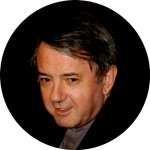 Much of the huge success of the tour of St Thérèse’s relics throughout England and Wales in 2009 (pictured above) is due to Mgr Keith Barltrop. The patient, softly spoken priest was the organiser of the tour and his great efficiency and attention to detail meant that 240,000 Catholics and people from many different religions venerated the relics of the Little Flower.
Much of the huge success of the tour of St Thérèse’s relics throughout England and Wales in 2009 (pictured above) is due to Mgr Keith Barltrop. The patient, softly spoken priest was the organiser of the tour and his great efficiency and attention to detail meant that 240,000 Catholics and people from many different religions venerated the relics of the Little Flower.
Before the relics of St Thérèse visited England, Mgr Keith made it clear that everyone was welcome to visit the relics and that they could volunteer and be part of a team to help the smooth-running of the visit. He encouraged others to invite their friends, whether Catholic or not. Mgr Keith was one of the first to talk about the New Evangelisation, long before it became a buzzword. While too often lip-service is paid to evangelisation without concrete initiatives, Mgr Keith is a champion of supporting practical plans.
As director at Catholic Agency to Support Evangelisation (CASE), he helped parishes, schools and individuals to bring cradle Catholics back to the practice of the faith and to seek converts. He is now parish priest of St Mary of the Angels in Notting Hill, west London, and has seen the potential for new immigrants to evangelise us. But he has cautioned against large bodies of immigrants being isolated in their own churches because it does not allow for mutual enrichment.
7. Fr. Pio Mandato
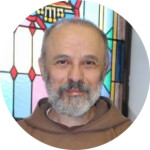 Fr Pio Mandato is a Capuchin priest who, in some ways, has followed in the footsteps of his relative, Padre Pio. Fr Mandato was named after the saint and, like Padre Pio, traces his roots back to the sun-baked, dusty village of Pietrelcina in southern Italy.
Fr Pio Mandato is a Capuchin priest who, in some ways, has followed in the footsteps of his relative, Padre Pio. Fr Mandato was named after the saint and, like Padre Pio, traces his roots back to the sun-baked, dusty village of Pietrelcina in southern Italy.
Fr Mandato received his first Holy Communion from Padre Pio before he and his family migrated to America in 1964. At 17 Fr Mandato entered the Capuchins. After his ordination in 1985 he became involved in hospital chaplaincy and developed a reputation for devotion to the sick, not unlike Padre Pio who founded two hospitals in San Giovanni Rotondo: the Civil Hospital of St Francis and the House for the Relief of Suffering. Fr Mandato also worked with homeless people in New York. His mother wrote a memoir, Padre Pio: Encounters With a Spiritual Daughter From Pietrelcina. The book was originally written in Italian and Fr Mandato translated it into English.
In 1998, after serving for 13 years as a Capuchin, Fr Mandato began to lead a life of prayer and solitude as a missionary hermit in the Diocese of Scranton, Pennsylvania, under Bishop Joseph Bambera.
Now 56, he takes breaks from the eremitical life to travel around preaching and offering healing Masses for the sick, which draw huge crowds.
8. Fr. Emmanuel Katongole
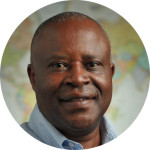 Fr Emmanuel was born in Uganda to Rwandan parents and was ordained in 1987.
Fr Emmanuel was born in Uganda to Rwandan parents and was ordained in 1987.
He has been stationed in parishes in Africa, Belgium and America. A globe-trotting academic, he is associate professor of theology at Duke Divinity School in North Carolina.
He is the author of several books that ask very hard questions about why Christians forsake their faith in times of great panic. In Mirror to the Church: Resurrecting Faith after Genocide in Rwanda, he examines why Rwanda, a country that was known for its missionary Christianity, took to internecine butchery. The Rwandan genocide is ever-present in his mind and inspired him to co-found the Centre of Reconciliation in the college where he is a professor. The centre trains ambassadors so that they can travel to different hotspots where war is threatened and seek to establish a ceasefire.
Fr Emmanuel is a clear voice in explaining the distinctive role that the Church in Africa plays. If the moral authority of the Church has been weakened in our part of the world because of the child abuse scandals, Fr Emmanuel is quick to remind us that the Church in Africa has an increasingly strong standing because it gives refuge to victims of war and of disasters and of disease. He says that the African Church works for “the voiceless”.
9. Fr. Chris Riley
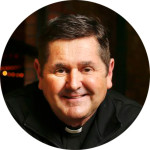 Fr Chris was born in 1954 and brought up on a dairy farm in the Australian state of Victoria. Salesian-educated, he was greatly moved by the film Boys Town and studied to be a teacher before being ordained a priest in 1982. Fr Chris spent a decade performing the normal priestly duties, but in 1991 he set up Youth Off the Streets (YOTS), which has the objective of supporting destitute young people by first meeting their basic needs. His first project was a food delivery van that distributed food to homeless youths in Sydney. His first foray into providing education for young people on the streets was when he opened Key College, which gave a flexible education to disadvantaged young people who couldn’t attend traditional schools. YOTS has developed to the point that it now runs refuges, schools, and drug and alcohol programmes.
Fr Chris was born in 1954 and brought up on a dairy farm in the Australian state of Victoria. Salesian-educated, he was greatly moved by the film Boys Town and studied to be a teacher before being ordained a priest in 1982. Fr Chris spent a decade performing the normal priestly duties, but in 1991 he set up Youth Off the Streets (YOTS), which has the objective of supporting destitute young people by first meeting their basic needs. His first project was a food delivery van that distributed food to homeless youths in Sydney. His first foray into providing education for young people on the streets was when he opened Key College, which gave a flexible education to disadvantaged young people who couldn’t attend traditional schools. YOTS has developed to the point that it now runs refuges, schools, and drug and alcohol programmes.
Not content to confine his mission to Australia, Fr Riley put in place an Overseas Relief Fund, which operates in diverse locations such as Ethiopia, the Philippines and Tanzania. In 2006 Fr Chris’s determination to save young people from homelessness was rewarded. He was appointed a Member of the Order of Australia and honoured with the Human Rights Medal. And this year he was given an honorary doctorate by the University of Western Sydney.
10. Fr. (now Bishop) Kevin Doran
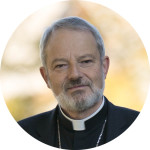 A native of Dun Laoghaire, Co Dublin, Fr Kevin entered seminary at a mere 17 years of age. He was strongly influenced by a teacher, Brother Finbarr, who prompted the first stirrings of a vocation in him.
A native of Dun Laoghaire, Co Dublin, Fr Kevin entered seminary at a mere 17 years of age. He was strongly influenced by a teacher, Brother Finbarr, who prompted the first stirrings of a vocation in him.
Fr Kevin recently came to international prominence for his role as secretary general of the Eucharistic Congress, which was held in Dublin last month. Fr Kevin spoke on EWTN and Salt and Light about the Congress’s potential to restore reverence for the Eucharist in Ireland. Fr Kevin’s calm, level-headed nature was essential for running a complex, international event that transformed Dublin into a temporary home for 80,000 pilgrims from all over the world. Throughout the Congress, Fr Kevin was the touchstone for 1,700 volunteers, gaggles of journalists who had burning questions about the abuse crisis and thousands of pilgrims.
Fr Kevin speaks in a gentle Dublin cadence and is known for his common touch. He has worked extensively as a vocations director and also has defended priestly celibacy. In an essay he wrote on celibacy he said: “I feel a great sense of joy about what celibacy makes possible in my life.”
As long as there are priests of Fr Kevin’s calibre, with the spark of faith, there is hope that the fire of faith will rekindle in Ireland.
This article appears in The Catholic Herald and was written by Mary O’Regan and posted July 4, 2012.



